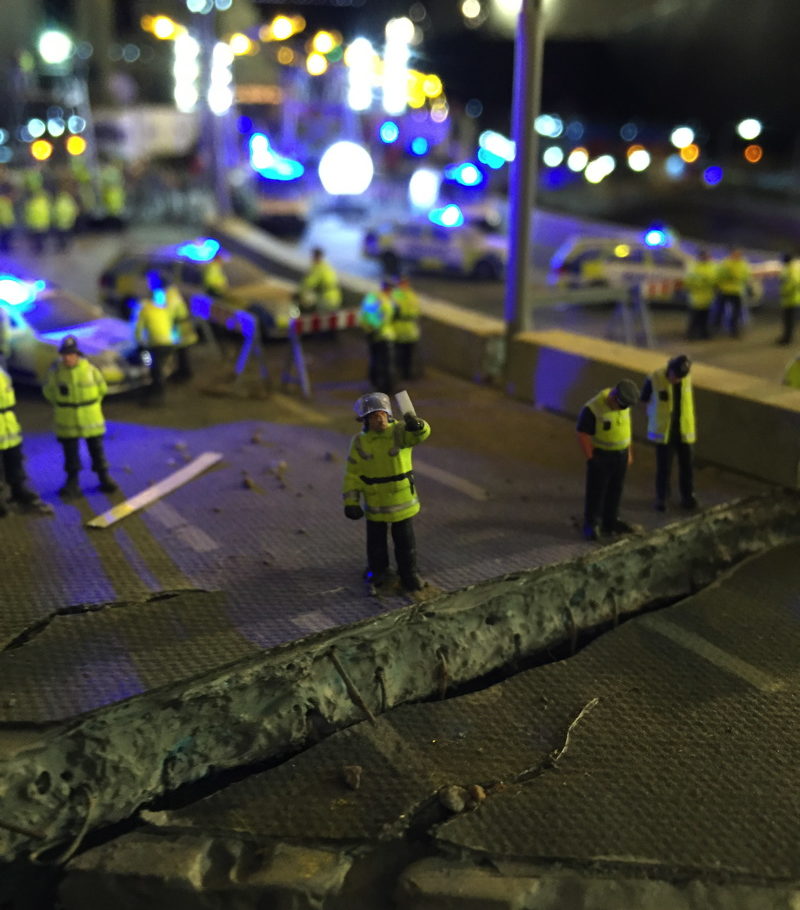Preview: Aftermath Dislocation Process
Rioting replaces gentility in former acid house musician’s Jimmy Cauty’s model village, discovers Steve Lee
Think typical model village and scaled-down scenes of bucolic bliss spring to mind. Jimmy Cauty’s The Aftermath Dislocation Process is, however, far from typical. With rioting replacing gentility and more concerned with uproar than miniature cricket played on perfectly coiffured village greens, The ADP is urban discontent writ small. “It’s not strictly a model village, even though I called it one, but more of an industrial estate with some tower blocks on the edge of town,” explains Cauty. “And while there are some rural areas, there is evidence there of Pagan bad behaviour like public hangings, wicker men and church burning.”
Conceived four years ago by the former co-leader of acid house band KLF who turned artist, and following a recent stint showing at Banksy’s Dismaland project in Weston-super-Mare, Cauty’s entire diminutive disaster zone has now been transferred into a 40 foot shipping container and is currently touring various riot sites across the country. Naturally, the shift from being a relatively open-plan entity viewable from myriad angles to becoming literally contained within four steel walls, observed via a number of peepholes cut into the container itself, has changed the entire visitor experience.
“Quite a lot of the riot action was on the edge of the model, which you couldn’t see so well in the container, so to fix this problem I moved a couple of hundred police officers inland by about six inches,” the artist says.
“On the plus side you can now spend as long as you like looking at what’s going on – the observation ports only allow a mono-vision perspective – and devising your own narrative about what happened. And it’s still a work in progress: I am constantly updating the lighting and the sound to get the best possible outcome.”
Crucial to Cauty is the locations in which The ADP will be showing, with the Merseyside-born artist keen to ensure his miniature depiction of urban malcontent connects with people unlikely to engage with what could loosely be called the “art world”. “We wanted to tie the tour in to a concept that fitted the narrative of the work – sites of historic rioting was the first choice – and thought it would be important to steer clear of established arts organisations and focus on community centres, prisons, abandoned roadside cafes… I hope young people who would not go to an art gallery might happen across the container.”
Yet despite the “learning from history” angle, the pamphleteering that is set to accompany the tour – with every location employing a local historian to provide background information relating to each particular riot site – and the sheer entertainment value gained from observing the utopian model village format turned upon its idyllic head, there are bound to be naysayers claiming Cauty’s teeny scenes of civil disobedience are only promoting petty crime.
“I am actually making an observation about a situation,” he says. “If it glorifies anything it’s boredom: the boredom of the police after they have achieved their goal of a total police state and there is nothing left to do except resort to low level violence and vandalism.”

Leave a reply
Your email address will not be published.